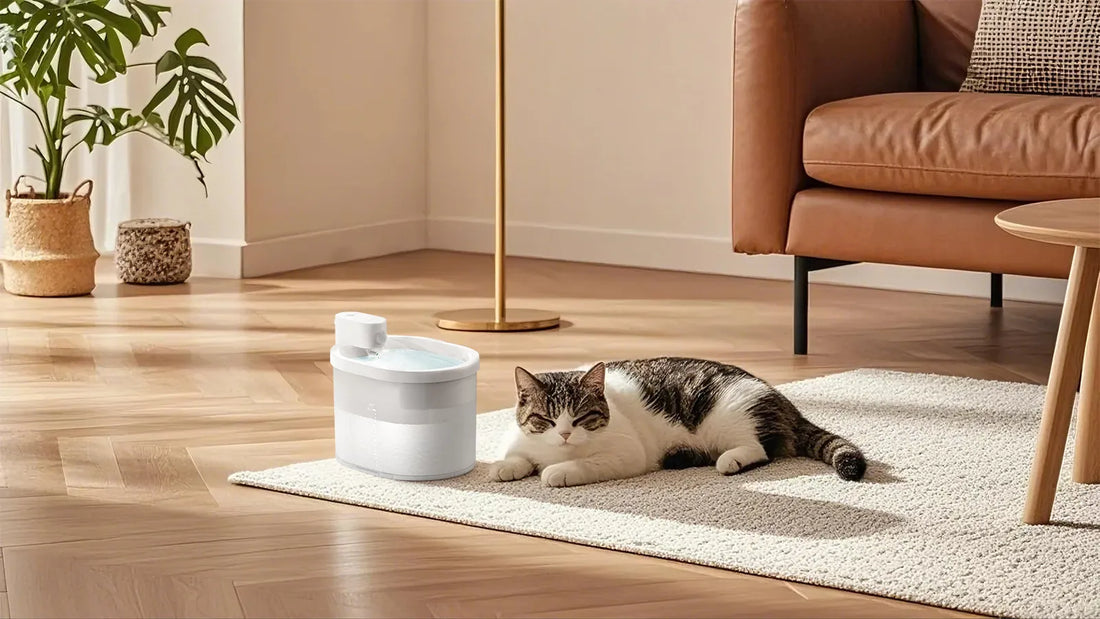If you've ever walked into your kitchen or living room only to find your cat peeing in the water bowl, you're not alone. This bizarre behavior can leave pet owners scratching their heads and wondering what could possibly be going on. While it might seem like a random act of defiance, there are often underlying reasons why your feline friend is choosing the water bowl as their new litter box. Understanding these reasons is the first step toward finding a solution and restoring harmony in your home.
Understanding Feline Behavior
Cats are creatures of habit, and their behaviors are often driven by instinct, health, or environmental factors. When a cat starts peeing in the water bowl, it's essential to consider the possible motivations behind this action. Unlike dogs, cats are highly sensitive to changes in their surroundings, and even minor disruptions can lead to unusual behaviors. By examining the potential causes, you can better address the issue and prevent it from becoming a recurring problem.
Medical Issues
One of the first things to consider when your cat starts peeing in the water bowl is whether there might be an underlying medical issue. Urinary tract infections (UTIs), bladder stones, and other health problems can cause discomfort or pain during urination. In some cases, cats may associate the litter box with this discomfort and seek out alternative places to relieve themselves, such as the water bowl. If you notice any signs of distress, such as frequent urination, straining, or blood in the urine, it's crucial to consult a veterinarian as soon as possible.
Stress and Anxiety
Cats are highly sensitive to stress and anxiety, and these emotions can manifest in various ways, including inappropriate urination. Changes in the household, such as the arrival of a new pet, a move to a new home, or even a change in routine, can trigger stress in your cat. When a cat feels anxious, they may seek out familiar or comforting objects, such as their water bowl, to mark their territory or find solace. Identifying and addressing the source of stress can help alleviate this behavior.
Litter Box Issues
Another common reason why cats may pee in the water bowl is dissatisfaction with their litter box. Cats are very particular about their bathroom habits, and if the litter box is dirty, too small, or located in an inconvenient spot, they may choose to go elsewhere. Additionally, some cats may not like the type of litter being used or may feel threatened by other pets in the household who also use the same litter box. Ensuring that the litter box is clean, accessible, and meets your cat's preferences can help resolve this issue.
Territorial Marking
Cats are territorial animals, and they may use urine to mark their territory, especially in multi-cat households. If your cat feels that their territory is being invaded or challenged, they may pee in the water bowl as a way to assert dominance or establish boundaries. This behavior is more common in unneutered or unspayed cats, but it can occur in any feline. Spaying or neutering your cat, along with providing separate resources for each pet, can help reduce territorial marking.
Curiosity and Exploration
Sometimes, cats pee in the water bowl simply out of curiosity or as part of their natural exploration. Kittens, in particular, are known for their playful and inquisitive nature, and they may experiment with different surfaces and objects. While this behavior is usually harmless, it's essential to redirect your cat's attention to appropriate areas for urination. Providing plenty of toys, scratching posts, and interactive playtime can help satisfy your cat's curiosity and prevent them from using the water bowl as a bathroom.
Environmental Factors
The environment in which your cat lives can also play a significant role in their behavior. Factors such as the location of the water bowl, the presence of other pets, and the overall layout of your home can influence where your cat chooses to pee. For example, if the water bowl is placed too close to the litter box, your cat may confuse the two and use the water bowl instead. Similarly, if the water bowl is in a high-traffic area, your cat may feel uncomfortable using it and seek out a more private location. Adjusting the placement of the water bowl and creating a calm, secure environment can help address this issue.
Solutions and Prevention
Addressing the issue of your cat peeing in the water bowl requires a combination of understanding, patience, and proactive measures. Start by ruling out any medical issues with a visit to the veterinarian. Once health concerns have been addressed, consider the environmental and behavioral factors that may be contributing to the problem. Ensure that the litter box is clean, accessible, and meets your cat's preferences. Reduce stress and anxiety by maintaining a consistent routine and providing a safe, comfortable space for your cat. If territorial marking is an issue, consider spaying or neutering your cat and providing separate resources for each pet. Finally, redirect your cat's curiosity and exploration by offering plenty of toys and interactive playtime.
By taking these steps, you can help your cat feel more secure and comfortable in their environment, reducing the likelihood of them peeing in the water bowl. Remember, every cat is unique, and it may take some time and experimentation to find the right solution for your feline friend. With patience and understanding, you can restore harmony in your home and ensure that your cat's needs are met.
If you're still struggling to understand why your cat is peeing in the water bowl, don't hesitate to seek advice from a veterinarian or a feline behavior specialist. They can provide valuable insights and guidance tailored to your cat's specific needs. By addressing the root cause of the behavior, you can help your cat lead a happier, healthier life and enjoy a stronger bond with your furry companion.













